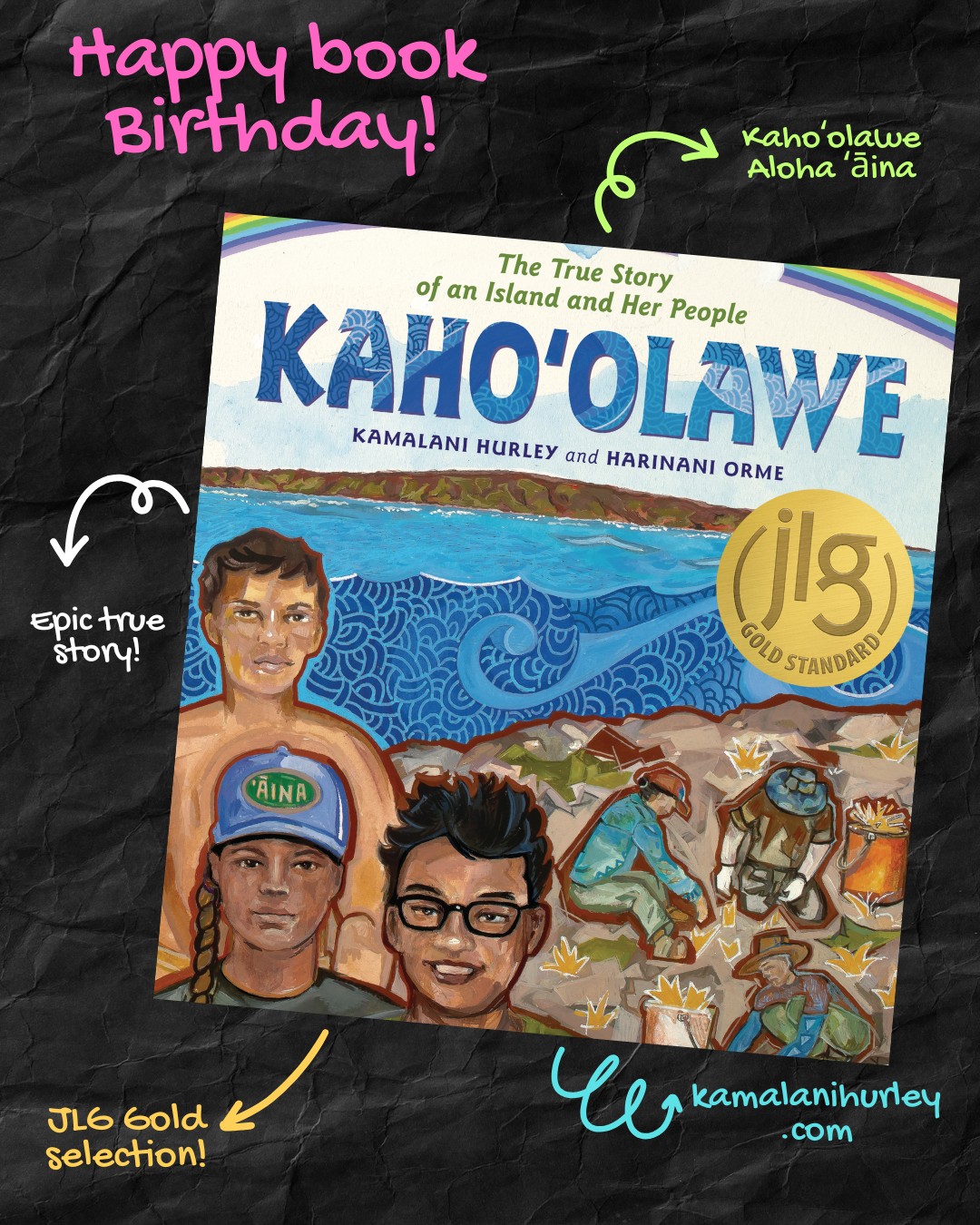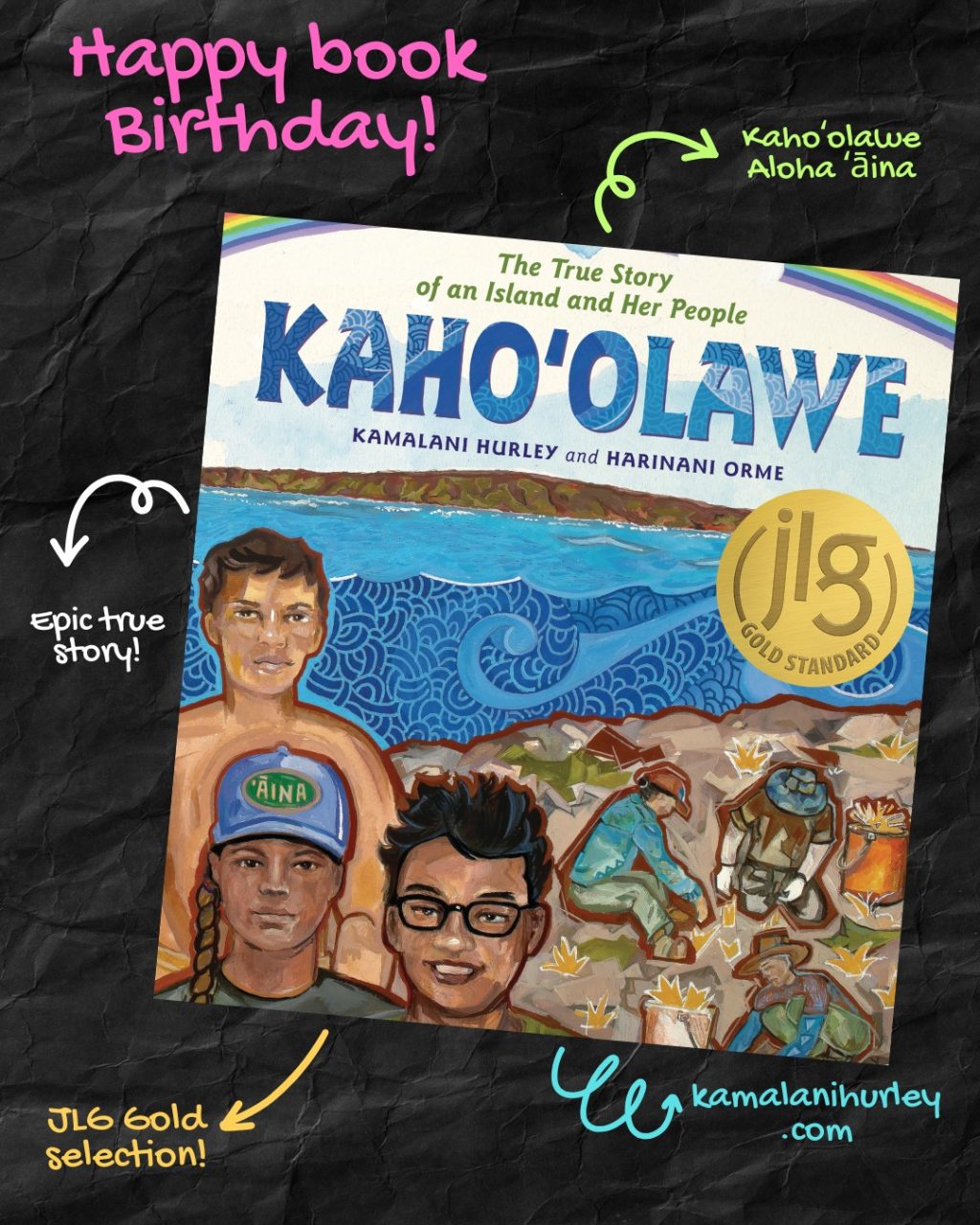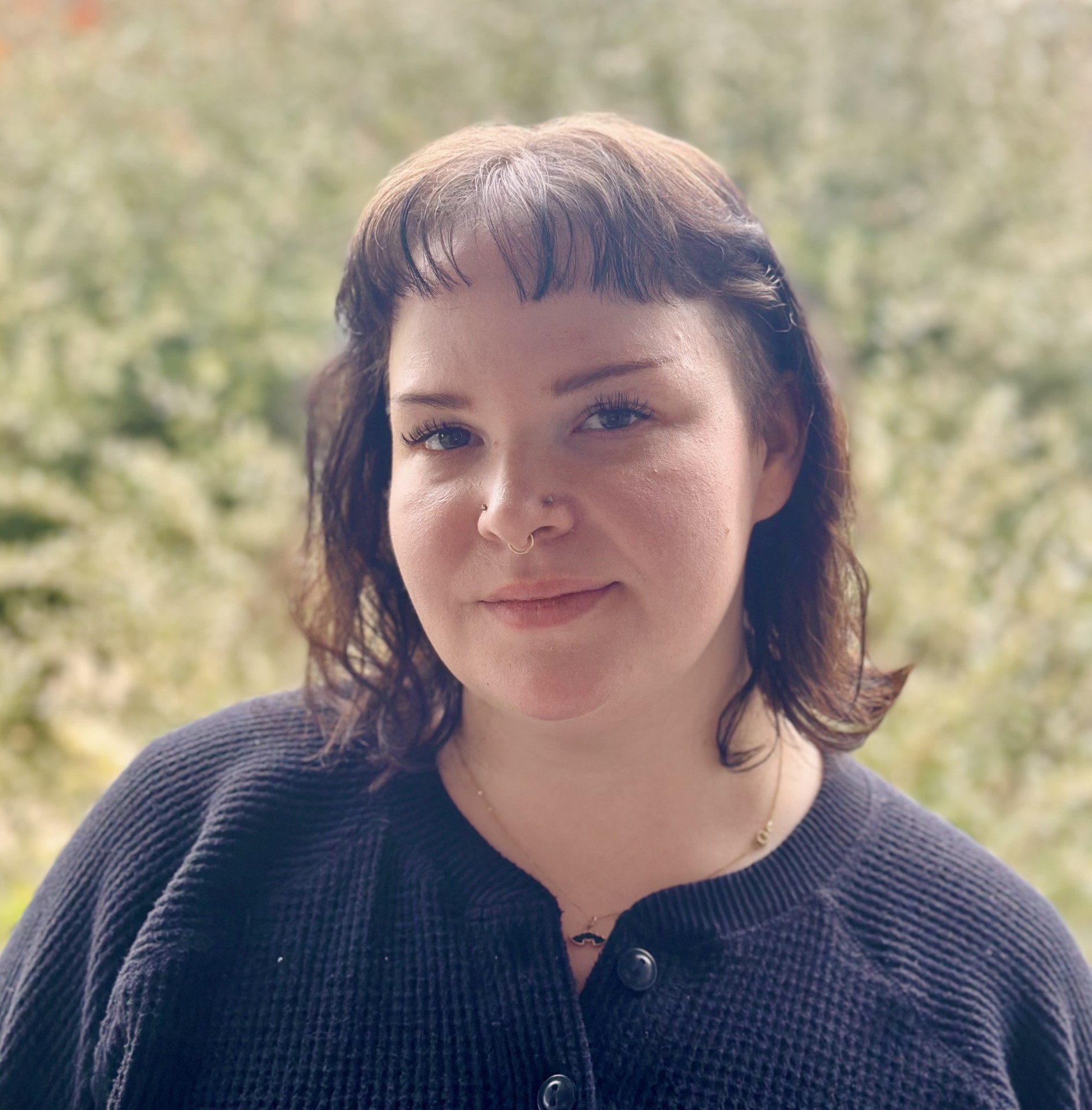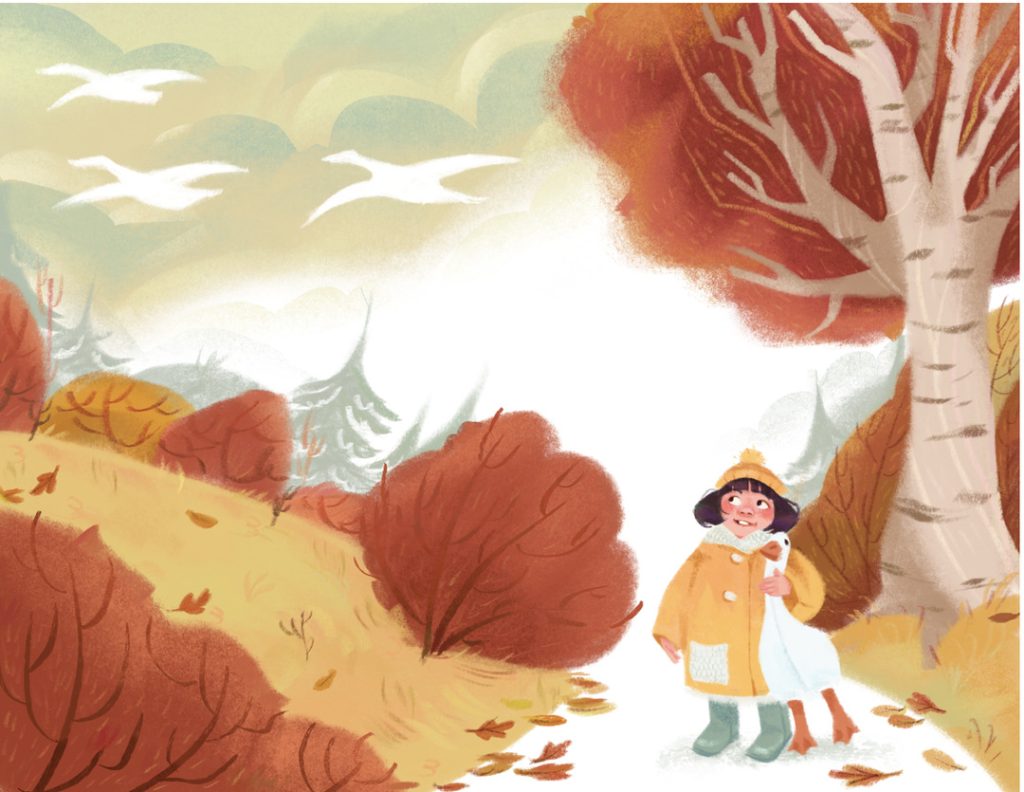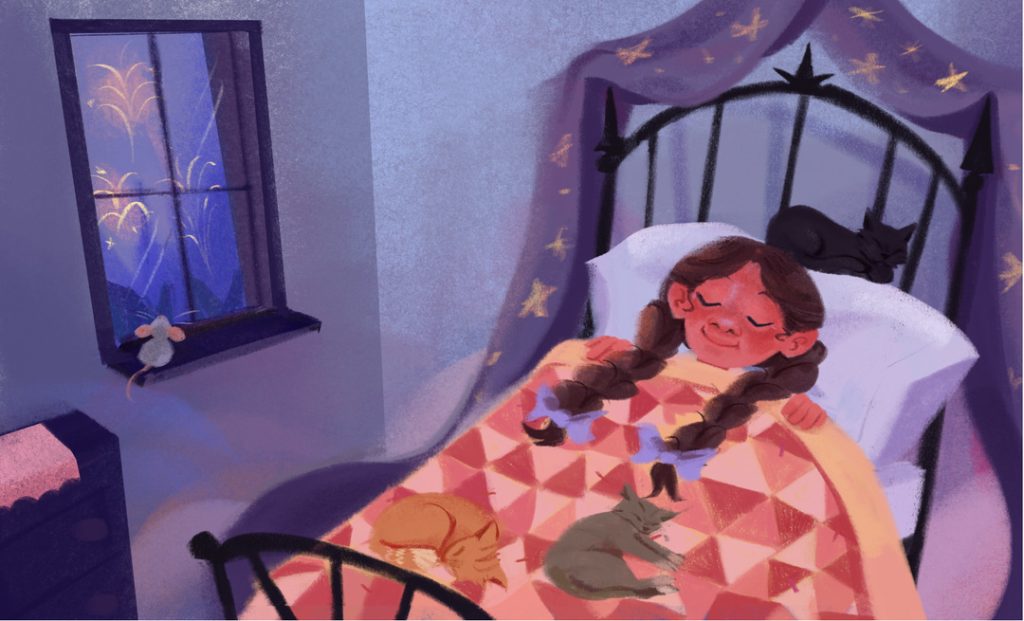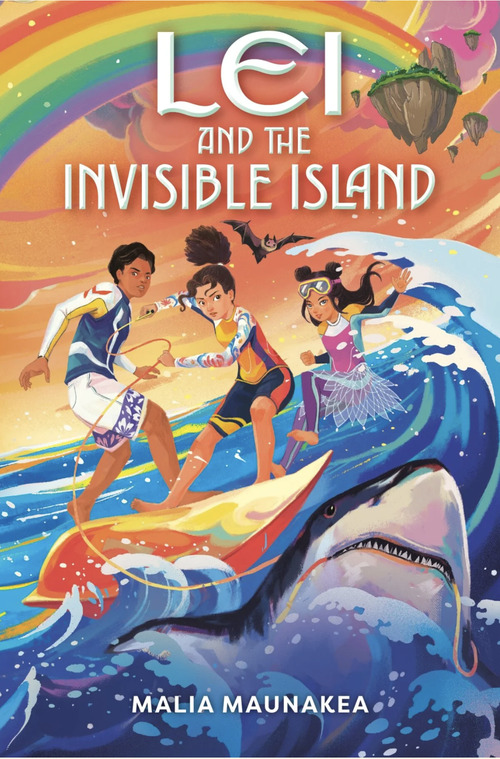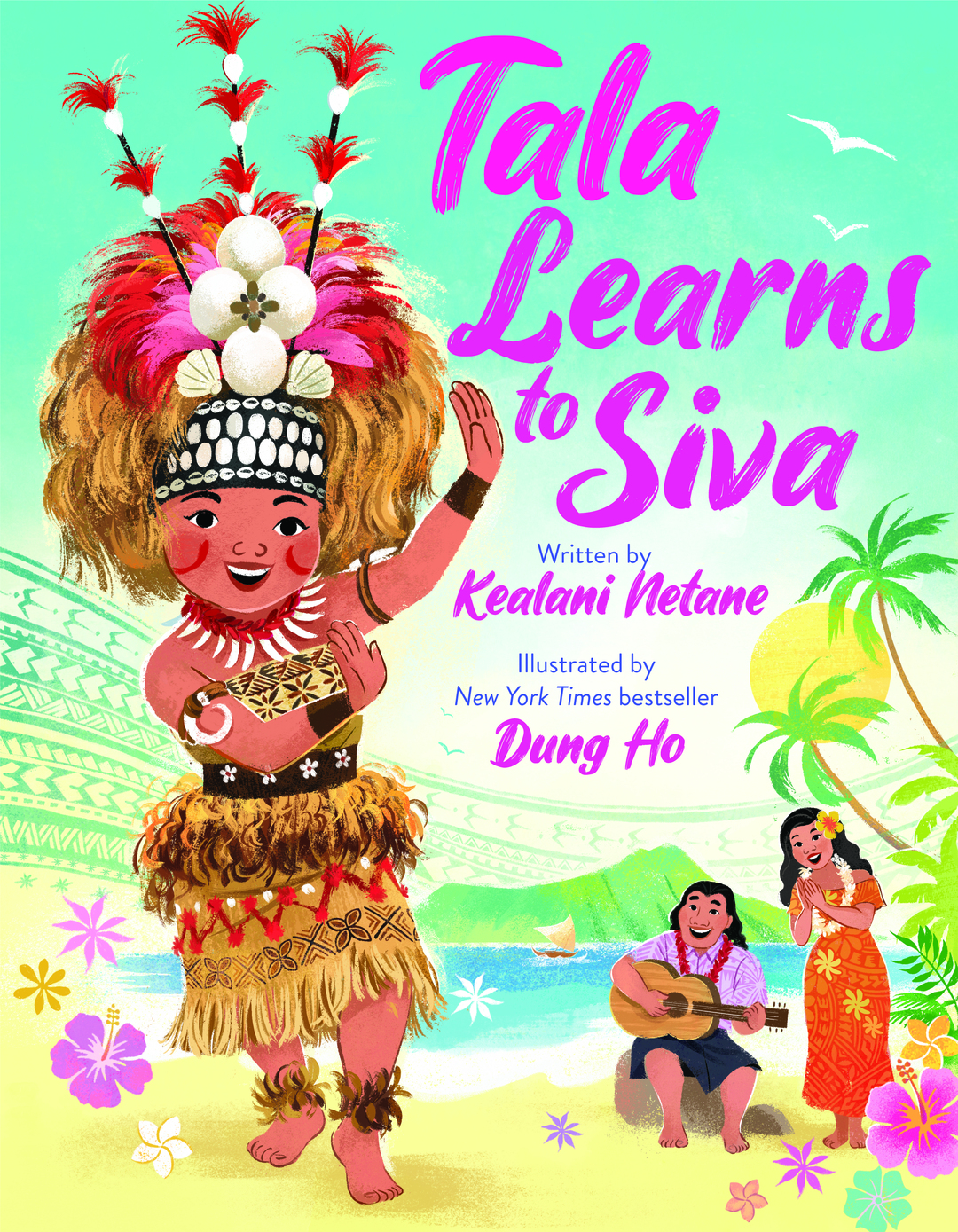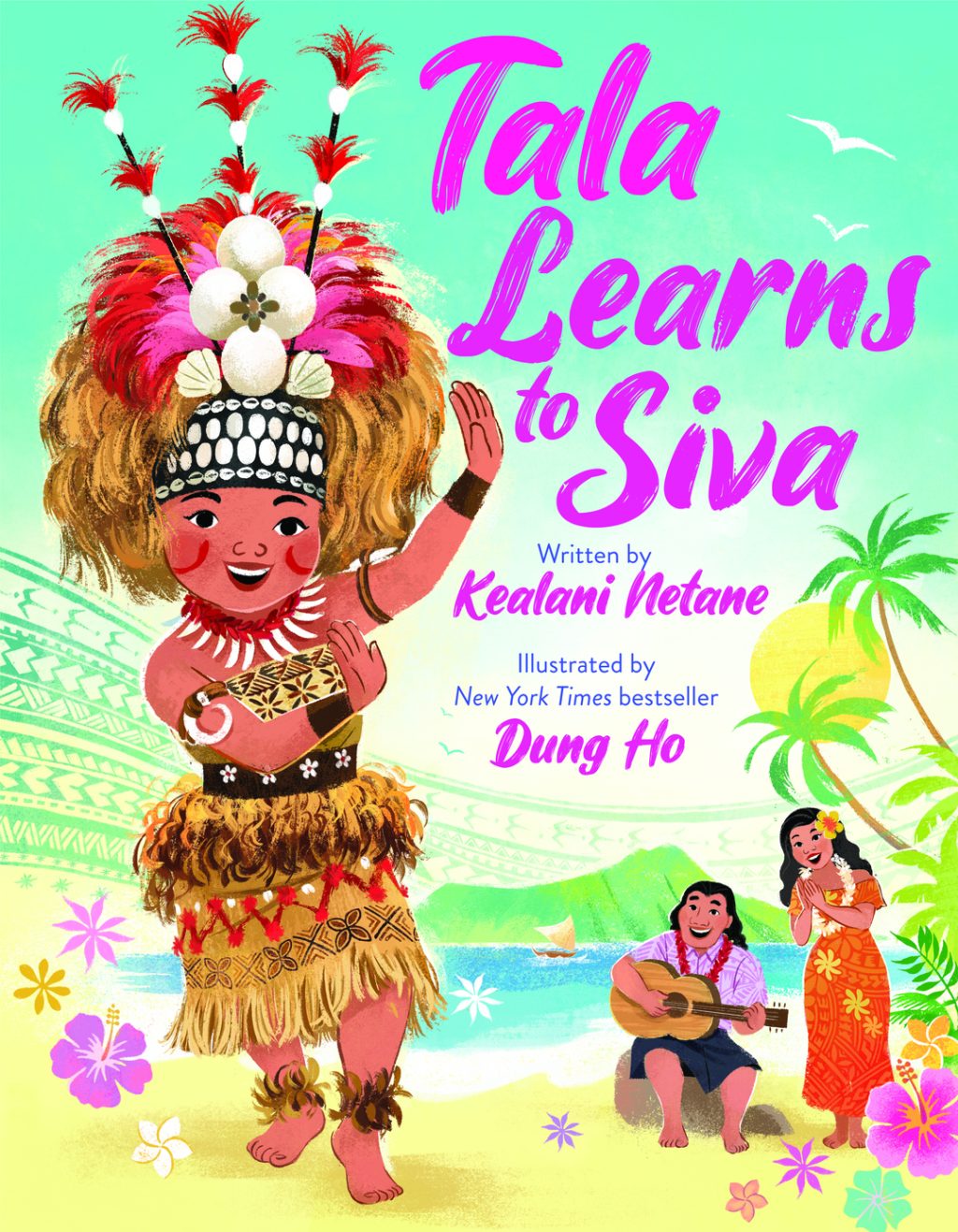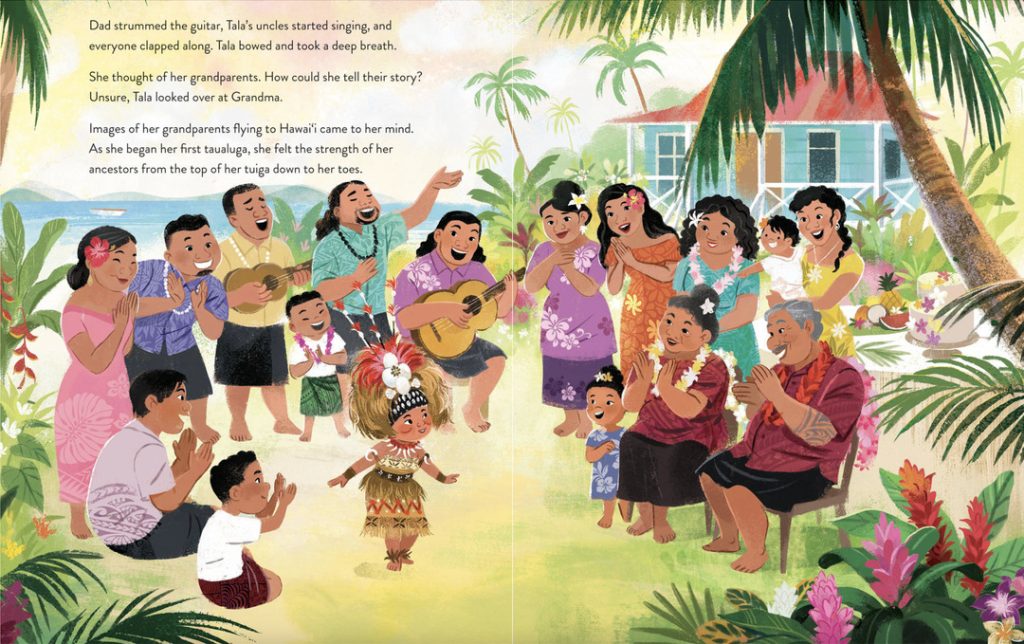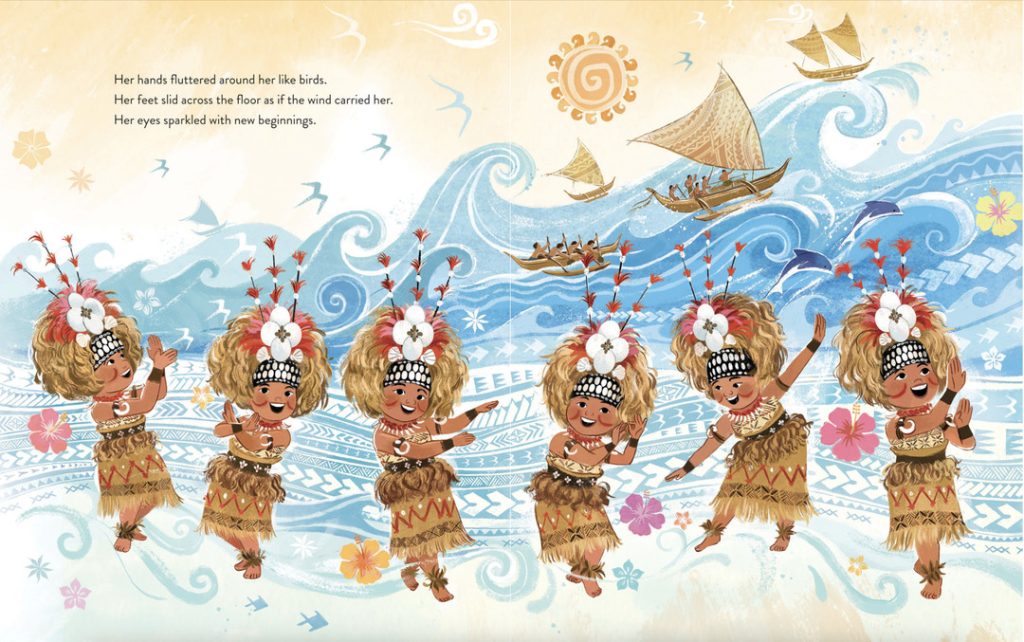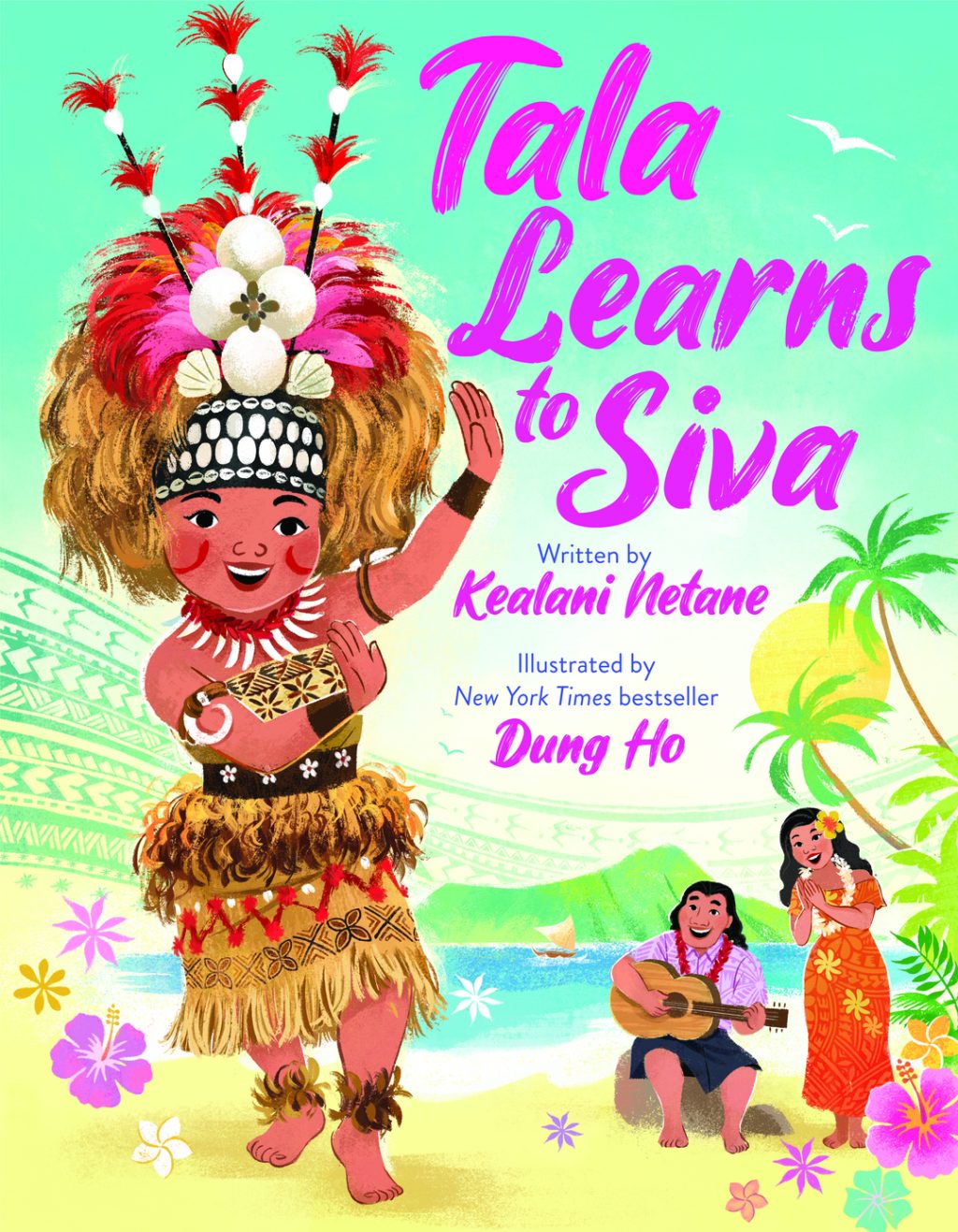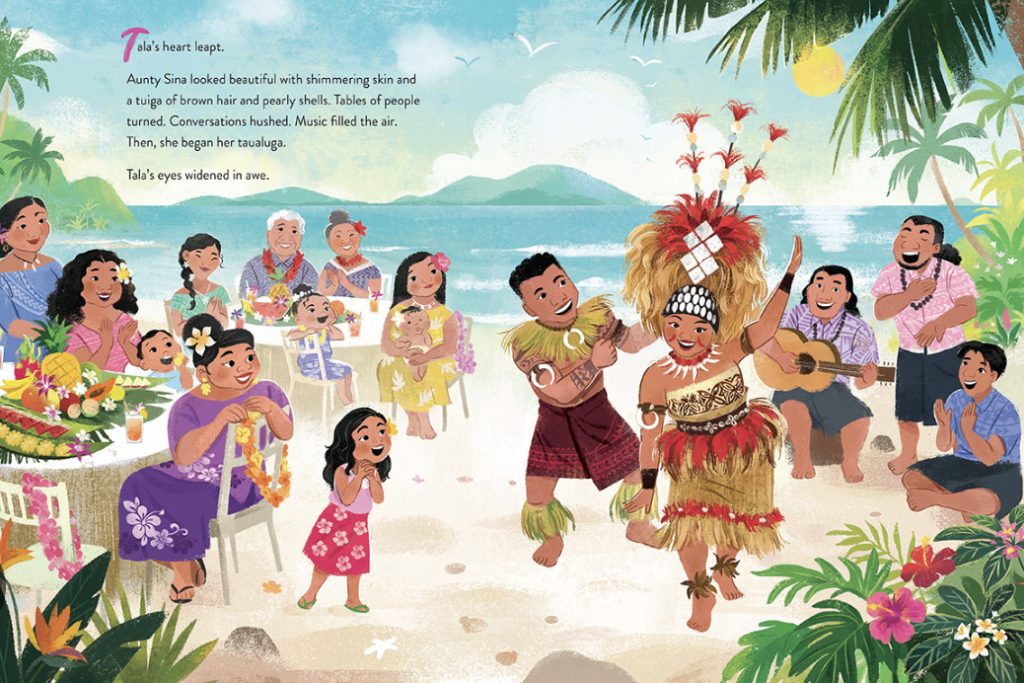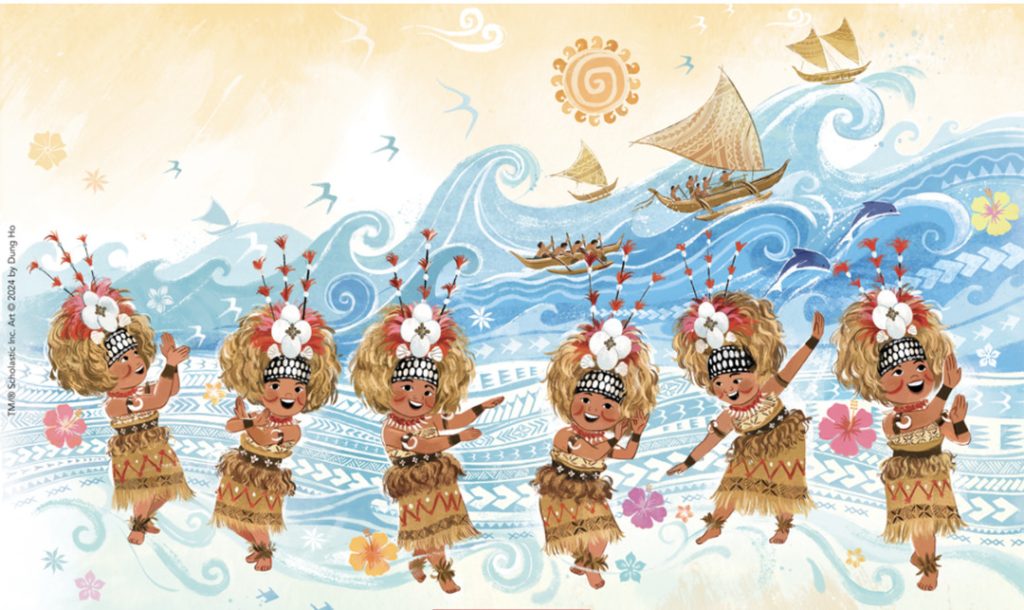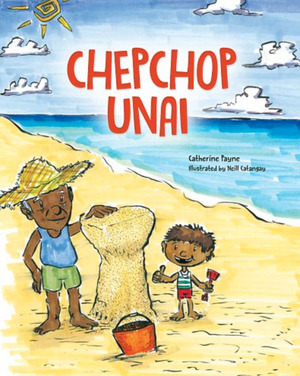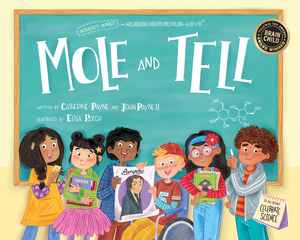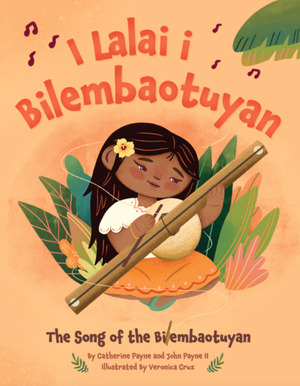'ōiwi
You are Invited to Our Book Launch at Native Books in Honolulu on February 8
You are cordially invited to the official book launch of Kaho’olawe: The True Story of an Island and Her People
at Native Books (1164 Nuʻuanu Avenue, Chinatown Historic Arts District)
on Saturday, February 8, 2025, from 11 am — 1 pm
Harinani Orme, the book’s wonderful illustrator, and I plan to share about the book’s journey to publication in a relaxed, talk story-type format.
Maile Meyer and the good folks Native Books have graciously offered to donate a portion of the proceeds of books sold during the event to the Protect Kahoʻolawe ʻOhana. Mahalo nui!
We look forward to talking story with you at there!
Kahoʻolawe: The True Story of an Island and Her People
Written by Kamalani Hurley, illustrated by Harinani Orme
Millbrook/Lerner (Feb 4, 2025)
ISBN 979–8765605011
Suggested for ages 7 — 11, grades 2 — 5
100% of the authorʻs proceeds will be donated to the Protect Kahoʻolawe ʻOhana
Flier created by Native Books. Photo credits: Harinani Orme and Rokki Midro
Interview with Native Hawaiian Illustrator Malia Pila
I like to think I’m a wordsmith. I can often take an idea and work to find the best words to tell a story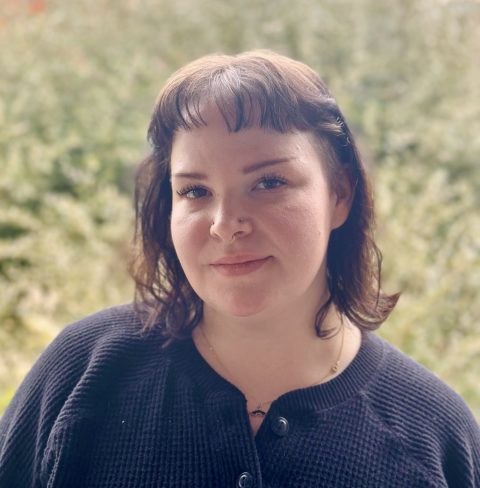 I hope my young readers will love.
I hope my young readers will love.
But a children’s book is way more than words. Beautiful illustrations are key to making well-written stories and turning them into visual magic for young readers.
Talented Native Hawaiian illustrator Malia Pila is one such magician. Her charming, gorgeous images have a cinematic aesthetic that young readers and their grownups love.
We are so pleased to talk story with Malia today.
Aloha e Malia! For those who haven’t met you, could you please tell us a little about yourself?
My name is Malia Pila, and I’m an illustrator working primarily in picture books these days, but I have also worked in visual development for animation! I enjoy exploring different media and styles with my artwork whenever I can as well as researching niche things like historical costuming and the mythology of different cultures.
My biggest supporter for nearly 15 years now has been my (soon-to-be) husband. My career path has not been very clear or linear and even when I’ve had moments of self-doubt, he has always been at my side to help me back onto my feet and find inspiration again.
Congratulations on your engagement! Where did you grow up?
I grew up in a handful of different places. A large part of my childhood was spent between Hilo where my father is from and Kona, but we eventually moved to the mainland, and I spent my teen years in places like Florida and Arkansas.
What has been your journey to becoming a professional illustrator? Why did you become an illustrator/artist? Have you always wanted to create art?
I have always had a desire to create art, but it took some time to land specifically on “professional illustrator.” My older sister introduced me to drawing when I was about 6, and while I’m sure I drew plenty before then, I specifically remember her introduction having a profound impact on me and igniting a spark that has just refused to die down since.
I’ve been lucky that my family has never put down my dreams or insisted I pivot to something else completely. So by the time I made it to university, I had refined an incredibly vague career plan of “ARTIST” into a more specific goal to work in the animation industry. I stuck with that ultimately, but I also found myself exposed to new things that really began to turn my head like illustrating for picture books and studying art history.
After university, I was left in a place I think a lot of fresh graduates are in after art school. There is so much uncertainty in many creative industries, so it can be overwhelming. I’ve tried to just focus on what makes me happy to create and that has really led me to where I am now.
What kinds of illustration work have you done? What do you enjoy most about illustrating, especially for a young audience? What are some of your greatest challenges?
I enjoy illustrating for the sheer enjoyment of creating, to be honest. It is so fun to think of something that perhaps no one has ever thought of before or, alternatively, what many many people have thought of in very different ways, and see it put down on paper or canvas. When it comes to illustrating for a young audience specifically, what I love about it is trying to inspire the same thoughts and feelings I once had as a child looking at artwork in books or rummaging through different covers at the library.
That itself sort of becomes my greatest challenge, too. I want to convey so much with my art sometimes that I have to sit back and pick what to include so as not to overwhelm an individual illustration or muddy a concept and message.
Do you have a favorite medium to work with? Why is that?
I recently picked up gouache painting again, and while I’m still refamiliarizing myself with the medium, I’d say it is becoming a new favorite. For the most part, I’ve worked primarily digitally as an illustrator until recently, and while I love all that digital work offers in the way of flexibility and ease, I really enjoy getting my hands back on something more tactile and messy like paints.
Can you share a bit about what you’re working on now? What’s your inspiration?
Something that has always inspired me is my childhood growing up in Hawaiʻi. I have such fond memories of sitting on my grandpa’s lanai eating manapua, gawking at tide pools, and playing with sleeping grass as a kid. On the flip side, leaving all of that and moving to the mainland was incredibly difficult for me. I’m just starting out with the idea, but I’m hoping to play with it a little and see if these inspirations can come together as either a series of illustrations to speak on these experiences or, who knows, maybe even a picture book!
That sounds so fun! What are your hopes and dreams for the year and beyond in terms of your career and what you do you hope for your career in the future?
I’m starting 2025 with a lot of hopes! I recently signed with an agent so I’m looking forward to debuting on new books and other projects in the new year. My dream for the next year is to build a good foundation for myself as a professional illustrator and past that? I would love to explore the possibility of publishing a book as an author/illustrator myself. To be added alongside other published Pacific Islanders would be such a dream!
What advice would you give an aspiring illustrator?
It is okay to pivot. It is okay to take a break, too! I went through several years of my life when creating art was not a priority for me because I was dealing with some very difficult things. I felt bad about this for a while but honestly, a break was what I needed and I do not feel as if I irrevocably damaged my career by taking one as I eventually came back rested and reenergized and caught right back up to my peers. Sometimes taking a chance to sit back and take in other media can be so helpful when you’ve been creating endlessly for a while and feel burnt out.
What kinds of books do you enjoy reading? Any favorites?
I read a lot of historical fiction and some of my favorite books tend to fall into that category. 2024 was unfortunately a slow reading year for me but one of my favorites that I finished was The God of Endings by Jacqueline Holland.
I’m hoping to read so much more in 2025. Specifically, I want to focus on reading more books by other Pacific Islanders. In the past, I’ve found it a little difficult to track down titles but thanks to resources like Pacific Islanders in Publishing, I have a growing reading list to work through.
What’s your online presence?
My portfolio website is maliapila.com. I’m a little more active these days on Instagram (or I try to be, anyway) and can be found there at maliapila.art. I welcome anyone that wants to chat or connect!
Mahalo nui, Malia, for talking story with us! We’re looking forward to hearing more from you soon! To learn more about Malia and see her wonderful illustrations, visit her website, Malia Pila.com, and follow her on Istagram at maliapila.art. Malia is represented by James McGowan at BookEnds Literary Agency.
Images courtesy of Malia Pila.
Book Review: Lei and the Invisible Island by Malia Maunakea
Native Hawaiian author Malia Maunakea has done it again with book #2 in her Lei and the Legends series for middle graders. Her newest book, Lei and the Invisible Island, takes Lei and the gang on a sometimes wild, sometimes scary, but always fun and satisfying adventure.
Lei and the Invisible Island begins where Lei and the Fire Goddess leaves off. Just when it seems that Kaipo, her best friend and ʻaumakua, is safe, his pendant goes missing. Now the race is on to save Kaipo from oblivion.
The ever-resourceful Lei gathers her friends and takes the reader on an adventure that is ultimately indigenous at its roots. Yet today’s reader will find the story accessible because of its fresh, modern take on traditional legends.
All of the characters — Kaipo, ʻIlikea, Tūtū, new character Kaukahi — are very well developed, but I especially love the character of Lei, who is totally likable as the hero the story. Lei is relatable because she isn’t perfect. She is a fully fleshed out protagonist, a strong and creative leader who must deal with doubts and difficult decisions. It is clear that Lei has a heart and courage and is thoroughly invested to meet the dangerous task at hand.
I really like that story appeals to young readers in the respect they are shown. The book deftly carries the underlying message of hope and forgiveness that the reader comes to naturally in a fun and scary way that middle grader readers love.
The authenticity in Malia Maunakea’s voice shines through. I love her local and kanaka ʻoiwi references which are woven like a lei haku throughout the book. The use of ʻōlelo Hawaiʻi is truly wonderful, and Tūtū’s pidgin is spot on.
Malia Maunakeaʻs website includes a very cool pronunciation guide (yes, that’s her voice on the audio clips) to the Hawaiian words used in the book.
Lei and the Invisible Island is a Native Hawaiian story with universal themes all readers will love. This book and book #1 Lei and the Fire Goddess are fun and exciting stories and terrific introductions to the Native Hawaiian culture. They deserve space on every middle grader’s bookshelf.
You can learn more about the author in our interview with Malia Maunkea and our review of Lei and the Fire Goddess.
Lei and the Invisible Island
By Malia Maunakea
Penguin Workshop, 2024
ISBN 978–0593522059Recommended for ages 8 — 12
Please read our disclaimer to learn our book review policy. Mahalo!
Review copy and image courtesy of Malia Maunakea
Book Review: Tala Learns to Siva
There’s something magical about children’s books written by Native Hawaiian and Pacific Island authors.
Until recently, stories about our communities told by our people were largely missing in children’s literature. Thankfully, the times are changing, and more voices are emerging to tell our own stories. The best of these narratives sing with heart and authenticity that comes from being rooted in the community.
Tala Learns to Siva is one of those stories. This delightful Pacific Island story by talented author Kealani Netane deserves a space not just on a child’s bookshelf but on school library shelves everywhere.
Young Tala watches her Aunty Siva perform the traditional Samoan taualuga. Captivated by her aunt’s grace and beauty, Tala asks her to teach her to dance in time for her grandmother’s birthday party. But as with most things worth learning, what at first seems easy actually takes work and practice. Will Tala learn to dance in time to share her siva with her grandmother? She decides to do her best.
Like all good stories for children, Tala Learns to Siva resonates with young readers everywhere. They will easily relate to the universal story of the young protagonist’s determination to overcome her doubts and fears. Tala practices everywhere she goes and works hard to master the hand and foot movements. But it’s when Tala understands that the dance connects her to her ancestors that she truly begins to shine.
The illustrations by New York Times bestselling illustrator Dung Ho are colorful and vibrant. The art beautifully invites the reader to become a part of Tala’s island family.
Two spreads are my particular favorites. I love the dance spread on pages 20–21. Both text and art do a wonderful job of capturing Tala’s joy and triumph as she dances the taualuga solo for her family and friends.
And I especially adore the family’s reaction to Tala’s solo on page 22. Growing up in Hawai’i, I’ve attended many Samoan parties and celebrations, and they often end just as page 22 so effectively shows, with elders and others joining in on the fun. This page is my very favorite, I think, because it speaks to me personally, because these folks could be my own friends and neighbors. And isn’t being able to relate to a character or to a piece of art what makes a book special?
The back matter includes a glossary of terms and an author’s note. In it Kealani expresses her love for Samoan dance and traditions that she gratefully passes on to her children.
Tala Learns to Siva is a wonderful introduction to Pacific Island culture and a most worthy addition to any bookshelf.
Tala Learns to Siva
Written by Kealani Netane, illustrated by Dung Ho
Orchard Books, an imprint of Scholastic Books, 2024
ISBN 978–1338859317
Suggested for ages 4 — 8
Meet author Kealani Netane in our talk story interview!
Please read our disclaimer to learn our book review policy. Mahalo!
Galley review copy and images courtesy of Kealani Netane.
Publisher’s Weekly Sneak Peak: Kaho’olawe Picture Book!
I’ve missed you, my reading and writing friends! It’s been a little while since my last blog post, but that’s because I’ve been working on a couple of manuscripts. As Stephen King once said, When you’re writing, the book is boss. No kidding.
My debut picture book, Kaho’olawe: The True Story of An Island and Her People (illustrated by Harinani Orme) is scheduled for Spring 2025. And look what I found in Publisher’s Weekly Spring 2025 Children’s Sneak Peak issue!
Woohoo!
It’s been two-years from idea to almost publication, and I can’t wait to share this book as well as my other projects with you!
Mahalo to Michael Nahoʻopiʻi of the Kahoʻolawe Island Reserve Commission and especially Davianna McGregor of the Protect Kahooolawe ‘Ohana for their generosity and encouragement.
More soon!
Book Review: I See Color, by Valerie Bolling and Kailei Pew
Author Valerie Bollingʻs picture books are always great choices for kids. Her colorful, lyrical early readers and picture books focus on the simple joys and triumphs of childhood.
Her first non-fiction picture book is a collection of biographical sketches, I See Color: An Affirmation and Celebration of Our Diverse World. Featured are leaders, many little-known to today’s kids, who have made profound impacts on the world. The collection’s short, engaging format makes it the perfect introduction of short biographies to children.
I am delighted that our own Native Hawaiian activist and scholar, the late Dr. Haunani-Kay Trask, is one of the featured unsung heroes! Haunani is presented in a lovely a two-page spread: a concise yet thoughtful passage highlighting her key contributions accompanied by a beautiful illustration.
The passage has all the hallmarks of author Bolling’s wonderful books with lyrical, approachable language, and the artwork is gorgeous. Most of all, I love that I See Color can become a jumping off point for kids everywhere to discover more about the people featured but especially about Haunani-Kay Trask and her fierce aloha for our lāhui.
This beautifully illustrated picture book is the ideal gateway for kids to learn about the people of color who continue to make a difference in our lives.
I See Color: An Affirmation and Celebration of our Diverse World
Written by Valerie Bolling and Kailei Pew, illustrated by Laylie Frazier
HarperCollins, 2024
ISBN 978–0063234260
Suggested for ages 4 — 8
Please read our disclaimer to learn our book review policy. Mahalo!
Review copy and image courtesy of Valerie Bolling.
Interview with Native Hawaiian Author Kealani Netane
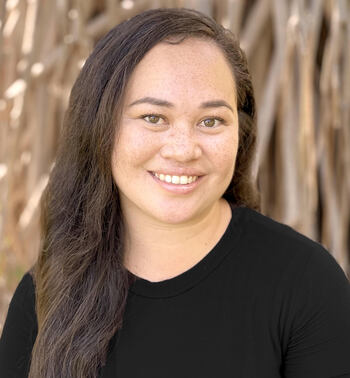 If you recognize Native Hawaiian/Sāmoan writer Kealani Netane’s name, you’re probably a fan of her popular bookstagram, Little Pasifika Readers. Or you might you recognize her from her thoughtful blog posts at Pacific Islanders in Publishing. Now add children’s book author to her list of professional accomplishments.
If you recognize Native Hawaiian/Sāmoan writer Kealani Netane’s name, you’re probably a fan of her popular bookstagram, Little Pasifika Readers. Or you might you recognize her from her thoughtful blog posts at Pacific Islanders in Publishing. Now add children’s book author to her list of professional accomplishments.
Her wonderful debut picture book, TALA LEARNS TO SIVA (Scholastic, 2024) is the sweetest story of a child’s desire to dance the traditional Sāmoan taualuga just as like graceful aunt. Through engaging text and beautiful illustrations by award-winning illustrator Dung Ho, young readers learn, like Tala, that they can do anything with practice and patience.
We are thrilled to talk story with Kealani today.
Aloha mai, Kealani! For those readers who haven’t met you yet, could you please tell us a little about yourself?
Aloha! I’m Kealani Netane. I am the author of TALA LEARNS TO SIVA, published by Scholastic. I am Hawaiian and Samoan. My dad is from ʻUpolu, Sāmoa, and my mom is from Waialua, Oʻahu and Honokaʻa, Hawaiʻi. I currently stay home with my three kids though I previously worked in education.
My biggest supporter is my husband, Xavier. He is my first critique partner and my last before I send a manuscript to my agent. He’s not a reader or a writer, but he is Samoan/Tongan so his cultural perspective is really helpful.We live in Kapolei, Hawaiʻi.
Where did you grow up? What high school did you grad from?
I was raised in Kailua, Oʻahu until my tween years when we moved to Kapolei. I graduated from Kamehameha-Kapālama in 2008.
Congratulations on your debut picture book! There are not a lot of books for kids by Native Hawaiian and Pacific Islander writers. Why do you think that is? What do you think we can do the change that?
Thank you! My grandma was a great storyteller. We would holoholo around the island and she’d tell fantastic stories about every area, but she was rarely interested in writing those stories down. For most of our culture’s existence, there wasn’t a need for books because we passed things down orally. As our world changed, books became more important. Now there is a need for children’s books by Pacific Islander writers. There are many efforts by local organizations to create books for our children, and there is a small but growing community of Pacific Islanders in U.S. traditional publishing. Even with all the current work being done, there is room for much more.
The CCBC found that only .002% of the books published in 2021 that they received were by Pacific Islanders (Link). That number doesn’t include the books published locally, only nationally. My biggest goal for my writing and my social media is for our children to have accessible books that mirror their life. Dr. Rudine Sims Bishop stated, “When children cannot find themselves in the books they read…they learn a powerful lesson about how they are devalued in the society of which they are a part” (Link). In order for there to be more books by, about, and for Pacific Islander children, there needs to be more Pacific Islanders in every sector of the publishing world. We should all be helping to lift and build others up to ensure that our children have access to our stories.
I’m really excited about the growing number of Māori and Pasifika authors in Aotearoa. The work they are doing there is truly inspiring. I’m hoping there will be more upcoming Pacific Islander authors in the U.S., especially those of Micronesian and Melanesian descent. Many people have reached out to me asking specifically for books from those communities. We definitely need more books for all of Oceania.
We agree! So what inspired you to choose Sāmoan dance for your debut novel?
I am a dancer. I grew up dancing hula, but I always loved watching older girls dance the taualuga. I thought they were the most beautiful and graceful dancers. As I grew older, I learned how to dance the Samoan siva and slowly came to understand the meaning behind the dance. In some ways, this picture book is a reflection of my own life. And in other ways, it’s reflective of how I want to pass on this traditional knowledge to my own children.
What beliefs are your work challenging?
TALA LEARNS TO SIVA is challenging the belief some people that Polynesian dances are purely for their entertainment. I do want to push back on the tourist-centric ideas people have about our islands and cultures. I want our children to see that their culture is for them first.
You also run a popular bookstagram. When did you start Little Pasifika Readers and why? What are your goals? What inspires you to write your posts and articles?
I started my bookstagram, Little Pasifika Readers, in early 2021. When I started writing in 2020, I collected resources on Pacific Islander children’s literature. It was difficult to find books, and I imagined others also had a hard time, so I created an avenue to share those resources. I was already following a few other Pasifika bookstagrams and found a community with them when I created my own.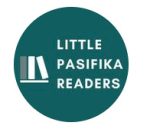
My prevailing requirement for posting a book is that the book has to be written or illustrated by a Pacific Islander. There are many books about us, but not as many books by us. My next requirement is that the book has to be accessible, meaning the book either needs to be available at public libraries or there needs to be a website where people can easily purchase the book.
What are your hopes and dreams for the year and beyond in terms of your social media/writing career and what you would like to see published in the future?
I have so many book and career ideas that I don’t have the time to do all of them, so I have to pick and choose which projects I want to take on. My bookstagram account is something fun that I do on the side, and my focus with that is to continue to share resources for people to find Pacific Islander authored children’s books. I don’t keep up with it as much as I’d like because my focus is more on Pacific Islanders in Publishing and the work I do with Keala Kendall and Manuia Henrich. We are working on creating development opportunities for Pacific Islander writers and continuing to share new book releases.
For my writing, I hope to finish the edits of a picture book I’m working on, and then I hope to keep working on my middle grade and young adult projects. I don’t know if I’ll finish those projects this year, but hopefully they will be ready for submission in the next couple of years. I also have other picture book ideas lingering on my computer that I’m unsure about, but I hope to find ways for them to work.
As for projects outside of my own, I’d love to see more Pacific Islander authored books in all genres, especially adult romance and contemporary middle grade and young adult.
Can you share a bit about what youʻre working on next?
I have another picture book project that I’m looking forward to announcing soon. I am also working on a middle grade novel and a young adult novel. Both of those projects are still in the early phases, so it’ll be many years before they will be ready for publication.
What do you enjoy most about writing, especially for kids? What are some of your greatest challenges?
What I love most about writing for kids is that kids are very glued into the specifics. When writing, I have to look at things from the mind of a child and children notice everything so I have to notice everything. Children are fascinated by the things adults often take for granted, so writing children’s books helps me slow down and appreciate life a bit more.
The greatest challenge when writing picture books is being able to tell an entire story arc in very little words. We also have to leave space for the illustrator to tell their story. So it’s a balancing act.
What kinds of books do you enjoy reading? Any favorites?
I love all kinds of books. I read across age groups and genres. There are a bunch of books I’ve recently read and enjoyed. In the picture book category, I loved Finding Papa by Angela Pham Krans and We Who Produce Pearls: An Anthem for Asian America by Joanna Ho. I really enjoyed the middle grade novel, Mani Semilla Finds Her Quetzal Voice by Anna Lapera. I felt like a proud aunty reading Mani’s feminism journey. My favorite young adult book so far this year is Dragonfruit by Makiia Lucier. The story is so heartwarming and adventurous.
In the adult category, I love reading romance and genre fiction. My favorite romance authors right now are Kennedy Ryan and Tia Williams. My favorite genre fiction book is Evil Eye by Etaf Rum.
I also love non-fiction books, especially books focused on Indigenous knowledge like Braiding Sweetgrass by Robin Wall Kimmerer and social justice like Angela Davis’ Freedom is a Constant Struggle. I’ve been getting into more historical books, and I learned so much from Aloha, Betrayed by Noenoe Silva and The Hundred Year Walk: An Armenian Odyssey by Dawn Anahid MacKeen. I’ve also been slowly reading more poetry books, and my favorite right now is ‘Āina Hānau/Birth Land by Brandy Nālani McDougall. I truly feel seen by her poems.
As you can probably tell, I love reading, and I try to read as much as I can although I don’t nearly have enough time to do so. I do keep a running list on my phone of books I want to read.
What advice would you give an aspiring author/blogger?
My advice for aspiring writers is to observe, learn, write, edit, seek feedback, and edit more. Observe yourself. Observe those around you. Learn from our chants, songs, legends. Learn from your own family history. Learn from what has already been written. Learn from other writers. Then, write. There’s only so much we can do in our heads. As the ʻōlelo noʻeau tells us, ma ka hana ka ʻike. We learn best when we actually write. Next, find a writing community. They will help with feedback. And edit, edit, edit. Once everything is ready, either self-publish or query agents/publishers. Also, you don’t have to write something cultural. Write whatever you want.
Are you active on social media? How can readers find out more about you and your work?
My website is kealaninetane.com. I also write the blog posts for Pacific Islanders in Publishing. Our blog posts are focused on showcasing the latest published books by Pacific Islanders and helping Pacific Islanders navigate the publishing industry.
Mahalo nui, Kealani, for sharing your manaʻo with us and for the good work you’re going to encourage more Pacific Islander creators. We look forward to seeing more from you! To learn more about Kealani Netane, please visit her website, Kealani Netane.com, her blog posts at Pacific Islanders in Publishing, and her bookstagram, Little Pasifika Readers.
Images courtesy of Kealani Netane.
Interview with Author/Illustrator Yuko Green
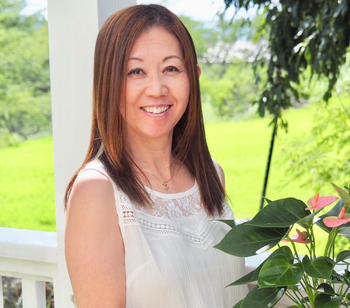 Pick up any popular children’s book in Hawai’i, and chances are that it is illustrated by Yuko Green. The award-winning author/illustrator of dozens of children’s picture and activity books, Yuko’s mixed-media artwork is unmistakable with its vibrant colors and delightful subjects that children love. Her work celebrates the people, nature, and traditions of our islands.
Pick up any popular children’s book in Hawai’i, and chances are that it is illustrated by Yuko Green. The award-winning author/illustrator of dozens of children’s picture and activity books, Yuko’s mixed-media artwork is unmistakable with its vibrant colors and delightful subjects that children love. Her work celebrates the people, nature, and traditions of our islands.
We are so pleased to talk story with Yuko today.
Aloha, Yuko, and welcome! For those who havenʻt met you yet, could you please tell us a little about yourself?
Aloha mai kākou! I am an illustrator and author of children’s books, living on the Big Island of Hawaiʻi. I am grateful to have had opportunities to illustrate and/or written more than forty children’s books and many childrenʻs activity books, with Hawaiian themes since 1989. I am also an art teacher for children.
I moved to Hawaiʻi from Japan in 1987. I have lived in Hawaiʻi more than 35 years, so I call Hawaiʻi my home now and like to call myself kamaʻāina 🙂
Your art is so expressive and colorful. If you had to choose a favorite project, which would it be and why?
Mahalo for your kind words!
I love to create illustration with an array of colors I see everyday in Hawaiʻi, and these vibrant and multicolored illustration has become my signature style. For my art, I use watercolor, collage, and digital mixed media to create illustrations. Working with textual mixed media (traditionally or digitally) adds visual interest to my illustrations, so mixed media collage is my favorite technique I use at this moment, and I have been using this technique for most of my recent books, including my latest children’s book Tūtū’s Secret written by Gloria Itman Blum.
I was illustrating this book when our first granddaughter was born, and since this story was about the relationship between tūtū and granddaughter, the story resonated with me. This book also allowed me to grow as an illustrator, learning to add the details digitally to my large forms of collage and finding the balance of those two elements. So this book turned out to be my favorite project.
What was the journey like to becoming an artist? Did you always knew you could create art?
As long as I remember, my dream was to illustrate children’s books, from my young age. That dream came true when God brought me to Hawaiʻi. In my early career, I was given the opportunity to illustrate a textbook by Bess Press in 1989 and illustrated and designed many island products by Island Heritage Publishers. I also illustrated many cultural paper dolls for magazines and a publisher on the continent, Dover Publications, for about ten years.
Then from around 1996 through 2000, I illustrated a series of Hawaiian theme educational coloring books, including Hawaiian Plants and Animals and Exotic Flowers for artists (76 pages), for Dover. To accomplish the task, I did intensive research and study, and that knowledge became my foundation for illustrating Hawaiian childrenʻs books. I give thanks to God how He has guided my illustrating career, which I have never dreamed I’d have when I first landed on the Big Island.
I also cannot thank enough for the relationship I have with Island Heritage since my first encounter in 1993 designing island products and my first book in 1997. I illustrated many childrenʻs books, board books, paper doll books, and coloring and activity books, and we continue to work to create for island keiki to this day. One of the longest selling books I illustrated with them, Humu: The Little Fish Who Wished Away His Colors, is 23 years old now! The author Kimberly A. Jackson and I are still good friend, and we are learning ʻōlelo Hawaiʻi, Hawaiian language, together now.
What do you enjoy most about creating art?
When I see keiki reading my books in the library or other public places, or when moms of my art class students tells me they used to read my books when they were young, I feel so humbled and grateful, and feel rewarded for my hard work.
Who would you say are your biggest supporters?
My family. My two daughters have seen their mom illustrating children’s books from their young age, and have been my best critics, giving me honest and valuable feedback.
My husband, Stephen, has always been there for me in every way to encourage me and support me, whether to assist me to decide on the career path or to decide between this color or that color for the keiki’s dress on a page. He was born and raised in Hawaiʻi, with knowledge and love for Hawaiʻi’s nature and culture, that has given me tremendous insight to all aspects of island themes. He always believe in me, even when I lose confidence, and so I know his faith in me made me to be the artist I am today.
Can you share a bit of your current work?
Being a Japanese native, I have always wanted to work for Japanese publishers one day. Since 2017, I have illustrated two coloring books for a Japanese Christian publisher, Olives Press, and currently am working on the third one.
I am also working on the 5th coloring book with a local organization, Keiki Heroes, on local keiki characters I developed with community leaders when COVID started. This project led me to work with several non-profit organizations in Hawaiʻi to help and educate keiki on various issues. I am very grateful that I can help these causes through my art.
What are your hopes and dreams for the year and beyond in terms of your artistic career and what you would like to see published in the future?
As much as I love creating and illustrating books, I enjoy having real relationships with my young readers. So my hopes and dreams for the year to come is to develop relationships in my community and on the Big Island, and in Hawaiʻi at large, to reach out and doing art with children. My on-going goal is to do more keiki art workshops and teach art in the classroom.
I also have this dream of creating a book illustrated with children’s art, and it looks like it will happen soon thanks to a workshop I offered on “Coloring Book Creation” for ages 13–18 at East Hawaiʻi Cultural Center in Hilo. The workshop theme is “Mālama ʻāina”, about endangered animals and plants of Hawaiʻi and how kids can help to protect them.
Where do you get your inspirations?
Hawaiʻi’s rich and diverse culture, history and nature have become my primary subject and inspiration for creating my children’s books. Over the years, my aloha for the ʻāina has grown deeply in me and is reflected in my books for keiki, whether in vivid stories of traditions of Hawaiʻi or illustrations featuring many native plants and animals.
In addition to books, what other kinds of art do you do?
Besides illustrating and writing children’s books, I am also an art educator. Currently, I enjoy teaching in the K‑5 art program at Waimea Elementary School. Teaching young children is my other passion, and I feel so grateful that I can share our beautiful world through art with them.
What advice would you give an aspiring illustrator?
Besides improving your artistic skills, knowing who you are can help you navigate your illustrating career. For example, when I just started, I concentrated on creating my paper doll books. It’s such a niche market, but it was a good decision for me to focus on that niche because I really enjoyed doing it and not many people was doing it at the time. Over time, my illustration skills improved because I was creating lots of art.
Another advice is to start locally instead of targeting big markets and competing with a large group of artists. When you start locally, such as on local magazines, newsletters, and businesses, you start to develop your style. You also learn about the illustrating business as you hone your skills. You become more experienced, and your portfolio grows.
Are you active on social media? Do your readers contact you? What do they say?
My website is www.yukogreen.com, and my Instragram account is @yukogreen.art. I also always appreciate hearing from my readers. I have received such nice messages from teachers, parents, and grandparents. I read and respond to all of them, even just to say hello. 🙂
Mahalo, Yuko, for talking story with us! We wish you all the success in the world! To learn more about Yuko Green and her books, please visit her website or at Instagram.
Images courtesy of Yuko Green.
Interview with Native Hawaiian/Guamanian Author Catherine Payne
Native Hawaiian/Guamanian author Catherine Payne lives by the ancient Chamorro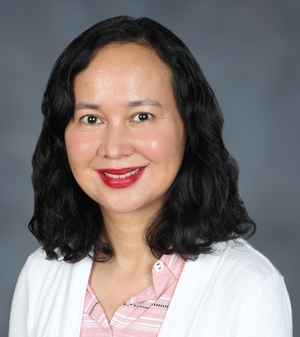 value of inafaʻ maolek, or making things right. An important aspect of inafaʻ maolek is that the whole community, not just the nuclear family, is responsible for raising healthy, happy children. Picture books, says the author of five books for kids, can be key to opening conversations between children and grown-ups.
value of inafaʻ maolek, or making things right. An important aspect of inafaʻ maolek is that the whole community, not just the nuclear family, is responsible for raising healthy, happy children. Picture books, says the author of five books for kids, can be key to opening conversations between children and grown-ups.
We certainly agree. Welcome, Cathy, to our talk story!
Aloha and håfa adai! Before we begin, please allow me to explain a little about our language.
The CHamoru Language Commission on Guam decided to use the CHamoru spelling for its orthography, but some people still use the Chamorro spelling. The Chamorro people in the Commonwealth of the Northern Mariana Islands still use the Chamorro spelling. To avoid the debate, I used CHamoru/Chamorro in my answers.
Since I’m mixed race but born and raised on Guam, I prefer to be called Guamanian.
Mahalo for that, Cathy. For those who haven’t met you yet, please tell us a little about yourself.
My mother is from Oahu, and my father is from Guam. I was born and raised on Guam where I ate CHamoru/Chamorro food as much as I could! I graduated from the Academy of Our Lady of Guam. My biggest supporter was my maternal grandfather, who was from Oahu. He passed away when I was in high school, but his support still means a lot to me.
Why did you become author? Have you always wanted to be an author?
I’ve loved writing since I could grip a pencil, but I didn’t try children’s literature until about a decade ago. There are so many kinds of writing that it took me a while to figure out that I should consider children’s literature.
What do you enjoy most about writing, especially for kids? What are some of your greatest challenges?
I love reading my books to children and seeing their reactions! My greatest challenge is finding time to grow as a writer. I’m busy as an English instructor and tutor, but I read craft books and watch craft webinars when I can.
What is your writing process like?
I spend a lot of time thinking and talking about story ideas before drafting. I usually revise drafts countless times.
Three of your books are co-authored by your brother, John Payne. What is it like to work with a family member? What strengths do each of you bring to a project?
I like working with my brother to develop stories. He brings his imagination; I bring my analysis. While he comes up with new ideas, I follow industry standards for plotting.
Please tell us about Chepchop Unai. What inspired you to write that story? Who inspired your main characters? What do you like best about them?
I’ve always wanted to write about Guam because it’s my home. Chepchop Unai is written mostly in English, but it has a sprinkling of CHamoru/Chamorro words. It reflects the way I speak. My first language is English, but I use CHamoru/Chamorro words to express certain ideas. My family inspired my main characters because the story depicts a close relationship between a child and his grandparents. I like showing how grandparents are important in children’s lives.
Mole and Tell is your STEM picture book. Itʻs quite different from your other titles. What was the journey like to write that book? What was your favorite part of writing your books? What was most challenging?
Yes, I ventured outside my comfort zone to write a science book like Mole and Tell. One of my favorite parts of the process was having incidental diversity. It features a Native Hawaiian girl named Leilani! The most challenging part was making scientific concepts understandable and engaging at the same time.
Youʻve also written two board books for younger kids, Ten Little Surfers in Hawaiʻi and These Little Kittens in Hawaiʻi. What inspired you to write those books? How did those books come about? What did you enjoy about writing them?
I’ve always wanted to write about Hawaiʻi because I love visiting there. After writing and revising stories set in Hawaiʻi, I sent them to a publisher. Luckily, they’ve done well.
Without giving too much away, what is I Lalai i Bilembaotuyuan about? Can you talk about your main character? What characteristics do you love about her?
I Lalai i Bilembaotuyan is a picture book about a girl learning how to play the bilembaotuyan, a CHamoru musical instrument, from her grandfather. At the same time, she learns how to cope with anticipatory grief.
Through her curiosity, Lalai finds her passion for playing the bilembaotuyan. I love Lalai’s curiosity and her desire to learn. It’s important for children to explore and try things to find their interests and passions.
Do you have any experiences as a Guamanian writer that you might share with our readers? What would you like to see change in the industry regarding the acceptance of BIPOC creators?
The U.S. book industry focuses on Western story structures like Freytag’s Pyramid, but following that model doesn’t come naturally to me. I hope that the industry becomes more open to alternative narrative structures.
What beliefs do you think your work challenging?
I’ve met people who didn’t think it was possible to have a literary career while living on Guam. Thanks to the internet, I’ve joined online writing communities, taken classes, and collaborated with publishers beyond Guam’s shores. Living on Guam hasn’t hindered me.
What are your hopes and dreams for the year and beyond in terms of your publishing career and what you would like to see published in the future?
I’m having fun writing more science picture books, and I’m also learning how to write chapter books and middle-grade novels.
What advice would you give an aspiring writer?
Please don’t let your location limit you. You can thrive even if you live on an island in Typhoon Alley like Guam. Sure, storms make life harder, but they run out of rain.
As you know, we always end our interviews with niele questions … Is there a fun fact youʻd like to share about yourself with young readers?
When I was a little girl, I wanted a name like Leilani, so I gave a character in Mole and Tell that name.
What kinds of books do you enjoy reading? Any favorites?
I enjoy reading short stories with plot twists like Ray Bradbury’s “A Sound of Thunder.”
Who is your hero?
I admire Queen Liliʻuokalani’s leadership and artistry. She is a good role model for females.
She’s my hero, too. What advice would you give your younger self?
It’s ok to not know what you want to be when you grow up. I eventually found my purpose in life after taking paths with dead ends.
Good advice, for sure. Mahalo, Cathy, for talking story with us! To learn more about Cathy, visit her on Instagram and listen to her watch her interview with Read with Rosa on YouTube.
Images courtesy of Catherine Payne.



